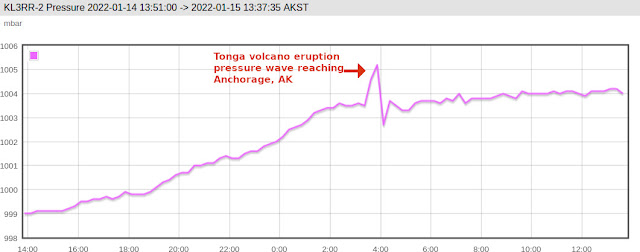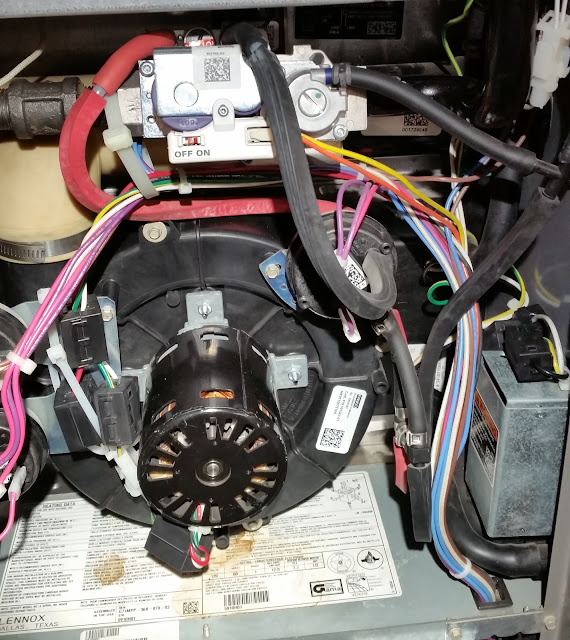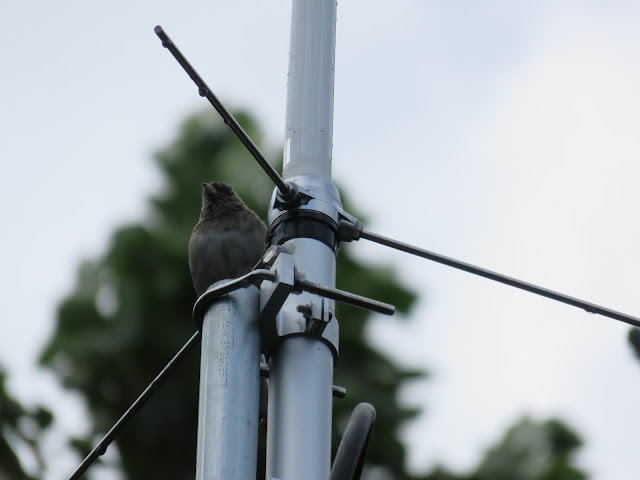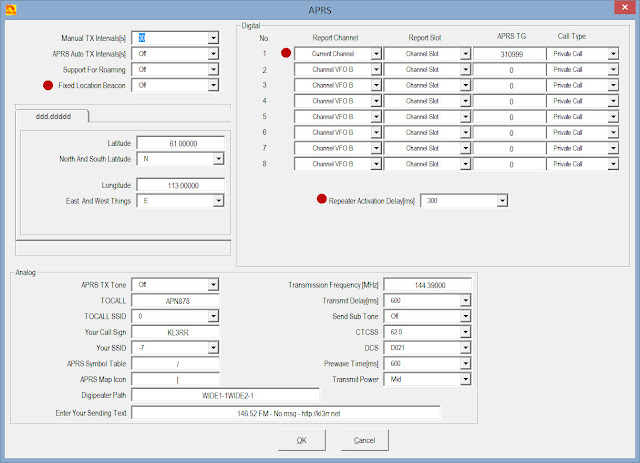 |
| KL3RR-2 barometric pressure increased from 1003.5 mbar to 1005.2 mbar before dropping to a low of 1002.6 mbar. (Sensor measurement interval 15 minutes) |
 |
| Satellite imagery of the eruption. |
 |
| KL3RR-2 barometric pressure increased from 1003.5 mbar to 1005.2 mbar before dropping to a low of 1002.6 mbar. (Sensor measurement interval 15 minutes) |
 |
| Satellite imagery of the eruption. |
 |
| Added clip on ferrite chokes (Fair-rite VO) to 120V supply wires (L,N,G). There are at least 2 chokes in series per wire (not all visible). |
 |
| This is the inducer fan motor itself. Disconected pigtail to twist wires and added 3 clip on chokes in series. |
 |
| Another view: chokes added to inducer fan wiring. Where there was room I added a choke per individual wire. Sometimes the chokes went over multiple wires; both ways add impedance. |
Before this filtering every time the furnace came on 40m and above were wiped out by noise. Now it makes no noticeable difference whether the furnace is running or not.
Made some changes to APRS igate KL3RR-2 this summer:
The igate performance (stations & distance heard) immediately increased. This was most notable when switching from the Baofeng to Yaesu radio.
 |
| Diamond X50A - bird approved. |
 |
| Vertical X50A (VHF/UHF) and horizontal G5RV Jr. (HF) |
Purchased an Xbox 360 power supply at the thrift shop for a few dollars. It has a relatively powerful 14.2A 12V output. It is basically a computer power supply in a portable ruggedized kid-proof casing. For the Xbox 360 there are 3 versions: 16.5, 14.2, and 12.1 amp. Others have reported converting them to general 12V power supply use.
First step was to cut the factory dc plug off. When you plug the power supply into AC power you will get an orange LED. To enable the 12V output connect the red and blue wires together (the LED will change to green). You can wire them together permanently or even switch it electronically and have a remotely controllable dc power supply.
The voltage is a bit low @ 12.2V, but is acceptable and does not drop too much under load. As far as noise it is surely not in the same league as a proper (much more expensive) power supply. However, I have tested it briefly on the HF bands and was still receiving quite a few signals. It's definitely superior to other low-cost switching power supplies and 12V chargers I have tested. Should work great for VHF and above. May not be ideal for 24/7/365 application, there is a variable speed internal fan which would probably fail after some time. Still, considering the cost, it makes a decent portable or spare/beater 12V power supply.
Added weather station (WX) temperature, % relative humidity, and barometric pressure data to APRS igate. As with most APRS fixed stations KL3RR-2 periodically sent a packet out containing a position and static "comment" which has now been replaced with (more useful) weather telemetry.
Reading temp + RH over RF (433 MHz) from an Acurite wireless remote sensor using an RTL-SDR and rtl_433. Many other brands and models of wireless weather stations are supported. Barometric measurements are from a Bosch BMP 280 communicating with the Raspi through I2C bus.
The pressure measurement is corrected to sea level barometric pressure and all parameters are fed into APRS client XASTIR through a "networked WX" interface using a combination of shell + python scripts and the network utility nmap. (Inspired by wxserver.sh)
 |
| KL3RR-2 Raspberry Pi igate + WX |
 |
| Bosch BMP280 absolute pressure sensor on Adafruit board in "custom" enclosure. Accurate to ±1 hPa / mbar. |
|
 | ||||
| A week of weather data as presented by aprs.fi. KL3RR-2 sends out a WX packet every 15 minutes. | |
This weather data can also be provided to the Citizen Weather Observer Program directly through APRS-IS. Submitting WX data to this program provides useful quality analysis which can help detect problems and improve the accuracy of the station.
Recently setup APRS over DMR on the Anytone 878...
The first step is to enable GPS and APRS in "Options" under the "Tool" menu in the CPS software. Then proceed to the "APRS" options window through the "Public" settings tree:
 | |
| APRS setup window in Anytone 878 CPS. |
 |
| Talk group "DigitalAPRS" created (BM TG 310999). |
 |
| Channel settings. |
 |
| Made it in to aprs.fi! |
 |
| NanoVNA with included accessories (minus SMA to UHF adapter). |
 |
| Hooked up to the Firestik 2MCKB 2m antenna. |
 |
| Minor assembly required. |
 |
| Hooked up to power, antenna, and ethernet for interface to PC. |
 | |||||||
|
 |
| VNC into Raspberry Pi 4 with about 16 receivers (SparkSDR). Sampling bandwidth 96 kHz. 26 Mbit/s going between HL2 and RPi4. |
 |
| 2x galvanized conduit (1 & 1.25" EMT) + hose clamps & exhaust clamp saddle + extended ubolt to connect the two sections. Arrow OSJ 146/440 Mhz J-pole now @ ~30 ft HAAT. |
 Safety and compliance inspector Jay collecting fee after approval of a Steller installation. Always seal exposed UHF connections with rubber splicing and electrical tape. |
 |
| XASTIR doing RF -> inet gating. Terminal highlights commands to activate Bluetooth serial link after paired to Mobilinkd. |
 |
| KL3RR-2 APRS Igate interface via remote connection (VNC). |
 |
| Mobilinkd TNC 2.2 w/ Baofeng UV-3R and APRSdroid on a tablet. The high resolution screen is ideal for mapping APRS data. |
 |
| The radio and TNC are a compact package. The Bluetooth is nice as the tablet is not constrained by a physical link to the TNC. |
 |
| Anytone AT-D878UV as heard by rtl-sdr+gqrx. Garbled coordinate data in APRS position transmission causes it to be ignored by receiving stations. |
 |
| A second example showing other stations' APRS traffic for comparison |
 |
| Success! |
 |
| Anytone AT-D878UV DMR & Analog VHF/UHF radio |